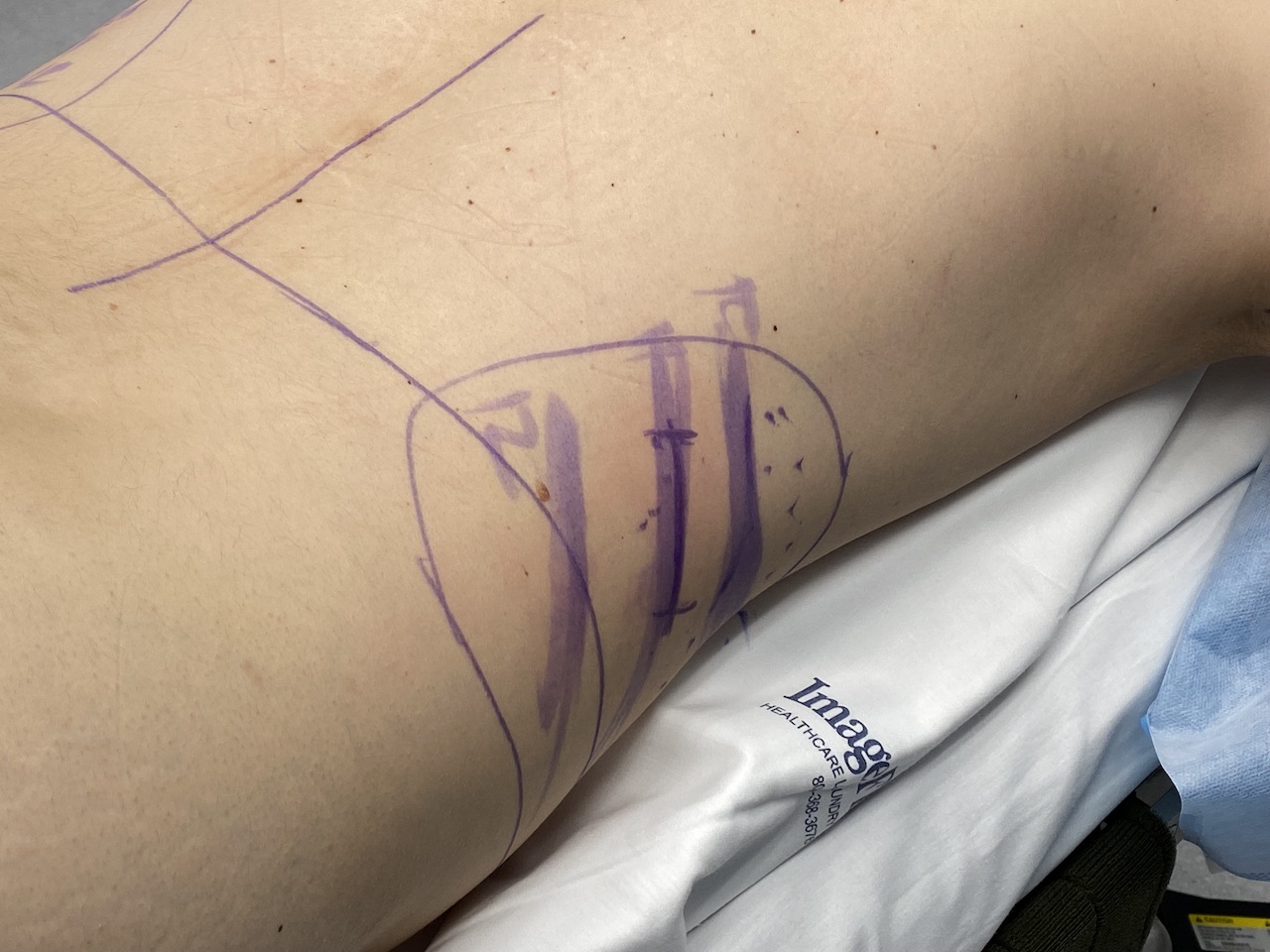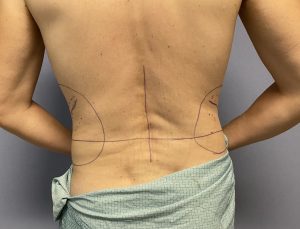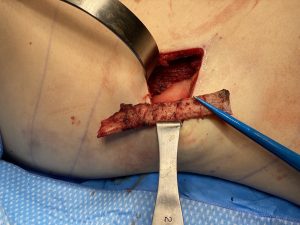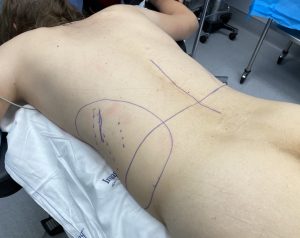Surgical waistline reduction is most commonly performed by traditional liposuction and tummy tucks. Liposuction has a more profound effect on reducing flank fullness and bringing in the waistline than most tummy tuck in which a horizontal tissue excision is performed with a midline fascial plication. But both together produces the most effective waistline reshaping and is all that most patients need to reach a satisfactory aesthetic result.
More aggressive forms of waistline reshaping exist and fall into the general category of lower lower ribcage modifications. This can be confusing since there are two types of such rib modifications, rib removal and rib fracture. Rib fracture is as the name inplies, a cut is made in ribs #11 and #12. which allows it to be fractured inward. Since the rib is not stabilized inward (plate fixation), it is molded by continuous pressure through a period of months of after surgery corseting. It is the corset that molds the outer half of the rib to curve more inward. Whether it heals by solid osseous healing or fibrous union is not clear. But the fundamental concept is that rib fracture achieves its effect by changing the curve of the lower two ribs only.
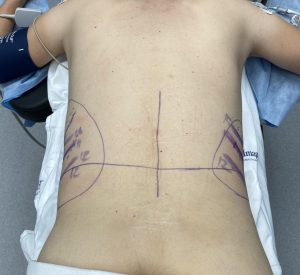
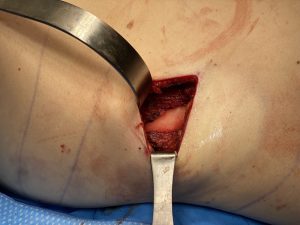
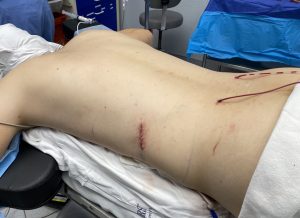
There are some obvious differences between rib removal and rib fracture which is evident in their names…removing the ribs or bending them in place. One can have a debate about whether they have equal effects on narrowing the waistline which will never be fully answered as a prospective study comparing the two techniques will probably never be done. But the additional tissue removals of fat and muscle give the aesthetic benefit edge to the rib removal approach provided one is prepared for a more invasive surgery and bit longer recovery.
While the two approaches are different it is also possible to merge the two techniques. Through an open approach ribs #10, #11 and #12 can be cut but left them in place as well as remove the latissimus dorsi muscle wedge.
Dr. Barry Eppley
World Renowned Plastic Surgeon

